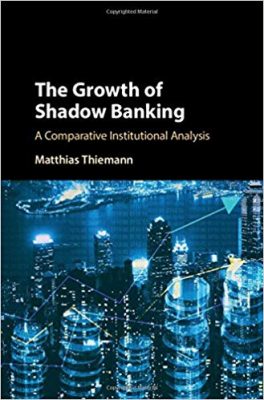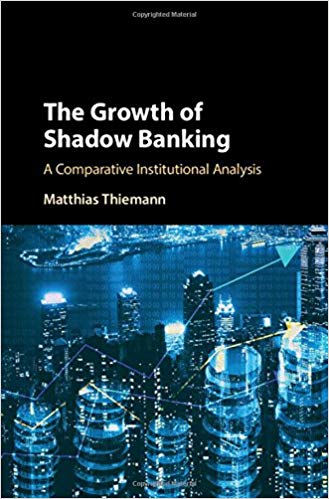 Author: Matthias Thiemann
Author: Matthias Thiemann
Publisher: Cambridge University Press – 289 pages
Book Review by: Sonu Chandiram
The shadow banking system is a term for the collection of non-bank financial intermediaries that provide services similar to traditional commercial banks but outside normal banking regulations. The phrase “shadow banking” contains the pejorative connotation of back alley loan sharks.
In this book published in 2018, the author Matthias Thiemann warns of unseen dangers lurking n the financial systems of many countries as well as in the financial system of the entire world. Among those dangers in the offing is a worldwide financial crisis as large as or even larger than the Great Financial Crisis of 2007-2008.
Mathias Thiemann writes:
“As this book goes to press, there is an eerie calm in financial markets. Ten years after the first major turbulences in Western financial markets that heralded the beginning of the Great Financial Crisis…” That ‘calm’ is backed up by these developments (we continue the quote):
- Stock indexes are at all time highs
- After the seizure of 2008-2009 (assets) and a long tepid recovery, countries in the West have finally regained a growth momentum, which allows the International Monetary Fund concurrently to provide an optimistic assessment for the near future
- Large banks have been forced to recapitalize over the course of the last ten years, almost doubling their tier 1 capital
- Basel III, the new global capital accord for banking regulation is seen to be much stricter than its predecessor, including a simplified ratio (limiting borrowing by banks and debt)
- It allegedly makes the world financial system more resilient
- Mark Carney, chair of the Financial Stability remarked: “the fault lines of the crisis have been repaired… it is now better supervised and regulated…leaving a safer, simpler, and safer financial system”
Despite the above events and statements that project a rosy picture of a global financial that is safe and sound, hidden risks are lurking that are not easily seen.
Among those risks are the following unwelcome developments:
- Growth has come at the price of a further buildup of household debt
- Persistently low to negative interest rates have lead to the search for high yields with the purchase of speculative bubbles that can burst and create disaster for the purchasers. These bubbles include very high-priced properties in large cities like London, New York, Paris, and elsewhere
- Investment banks, particularly in the United States have reached new peaks of profitability with high-leveraged loan buyouts financed by collateralized loan obligations that are structured debt products once described as toxic.
- New ‘nonbanks’ (not subject to government regulation as banks are regulated) have emerged and are engaged in lending to lend to riskier, high-yield borrowers, while the banks stand behind them.
These four developments itemized above, as well as other actions fueled by asset-led, rather than demand-led growth have been restored as they existed just before the 2007-2008 Great Financial Crisis.
This book contains detailed descriptions of the above-mentioned scenarios, and they are found in its nine chapters we list below:
- States and the Regulation of Globalized Finance
- The Asset-Backed Commercial Paper or ABCP Market at the Heart of Shadow Banking and the Financial Crisis
- How to Explain the Absence of Regulatory Action on Shadow Banking: Situating Regulators in Their Socioeconomic Context
- The Transformation of US Financial Markets since the 1960s and the Emergence and Growth of the ABCP Market
- In the Shadow of Basel
- Converging Procedures or Standards? The Challenge of the IASC and Domestic Pathways to SIC 12
- Steering Finance toward Prudence: The Role of Banking Regulators in the Governance of Compliance Decisions
- The Fate of the Bank-Based Shadow Banking System Postcrisis
- Conclusion: Changing the Façade, but not the Structure: the Continuing Threat of Shadow Banking
This is an excellent book on the little-known but dangerous shadow banking system that exists outside the government-regulated legitimate banking system. Definitely an eye-opener!
Editor:
Matthias Thiemann is Assistant Professor at the Centre d’etudes Europeens, Sciences Po Paris.







